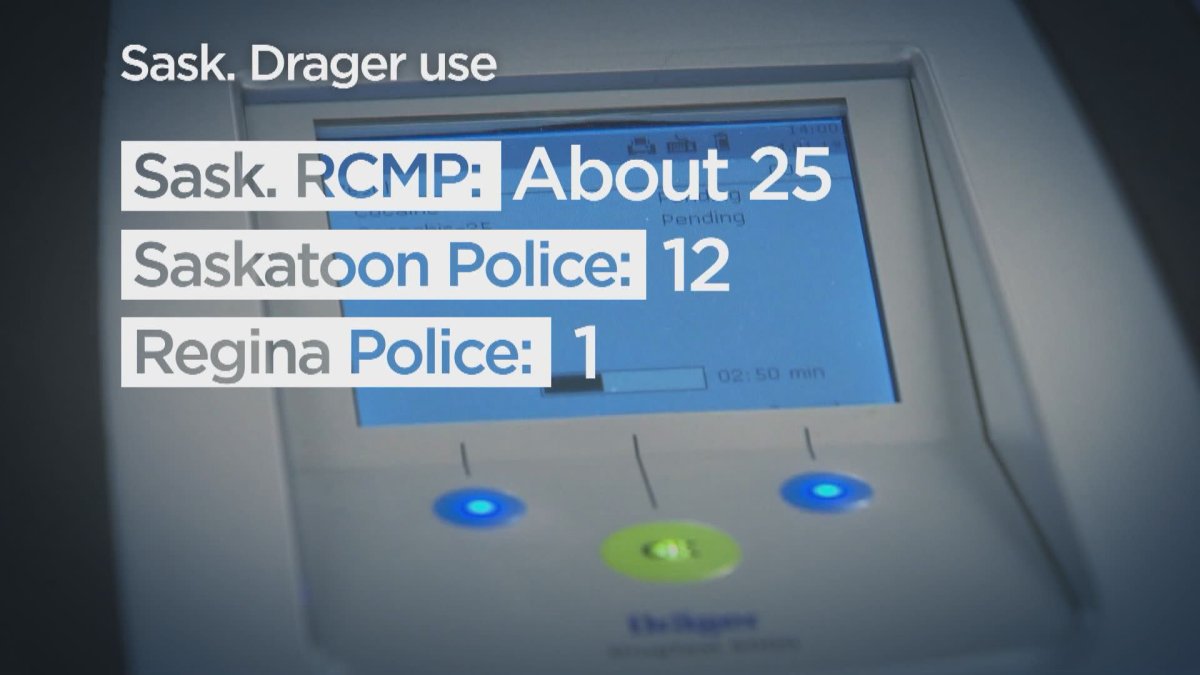The Drager DrugTest 5000 has been a tool accessible to police across Saskatchewan for several months now, but they haven’t gotten a whole lot of use.

Reviews of the device from police are generally positive, according to Saskatchewan RCMP spokesperson Cpl. Rob King.
However, unlike a breathalyzer’s alcohol testing abilities, the Drager can’t determine a level of impairment by itself.
“What it really does is give officers an idea of recent consumption of something either containing THC or cocaine,” King explained.
“It gives that extra reassurance, that along with behaviours being observed, that consumption has recently happened.”
The RCMP have nine Dragers in Saskatchewan, six dedicated to municipalities and three that are shared between rural detachments. Each device costs about $6,000.
The RCMP have used the device 57 times, but King said a majority were for training purposes. In the field, he estimated roughly 25 tests. Twelve of those tests were positive for cannabis. Three of those tests also were hits for cocaine.
The Saskatchewan RCMP began to receive Dragers in March. The first ones were deployed in April. About 40 officers have been trained to use them.
The Saskatoon police have one Drager, which is brought to all checkstops. The device has been used 12 times, with 10 positives for THC and two negatives. One of the positives also included cocaine on top of THC.
The Saskatoon police noted that they have charged people with drug impaired driving without using the Drager. Saskatoon’s Drager entered the field in the summer.
The Regina Police Service have only used their Drager once. A result was not provided, but Chief Evan Bray previously said they have not charged anyone with drug impaired driving who was only using cannabis since legalization.
Because the Drager can’t determine impairment, it primarily used to build toward further drug screening.
“What it does is further the grounds, based on observations and the results from the unit, to take the person and compel them to submit themselves to a test from a Drug Recognition Expert (DRE),” King explained.
“The DRE then goes through their tests, testing things like movement, steadiness, pupil size, and then compel them to either a blood or urine analysis.”
DREs are specially trained officers who use a 12 step process to determine drug impairment. Their evaluation of the tests can be considered expert evidence when placing a drug impaired driving charge.
Prior to legalization there were 74 DRE trained officers in Saskatchewan. SGI spokesperson Tyler McMurchy estimates there are now around 100.
The science for roadside cannabis testing devices is new, and new ones are being developed.
If a driver has both been drinking and smoking pot, police will commonly pursue an alcohol related charge, according to a Regina police report on cannabis.
“If someone is using alcohol and another drug, the police officer can establish that you’ve been using alcohol, and the level of alcohol is sufficient to warrant a charge if you exceed .08 or .04 and trigger those administrative penalties, that might be all they need,” McMurchy said.
The RPS noted, that an unintended consequence of this is rates of drug impaired driving are likely underreported.
The biggest complaint around the Drager from police is that they are large, cumbersome and it can be hard to find a flat surface for field tests. King said a smaller version is expected to be available in the near future.





Comments